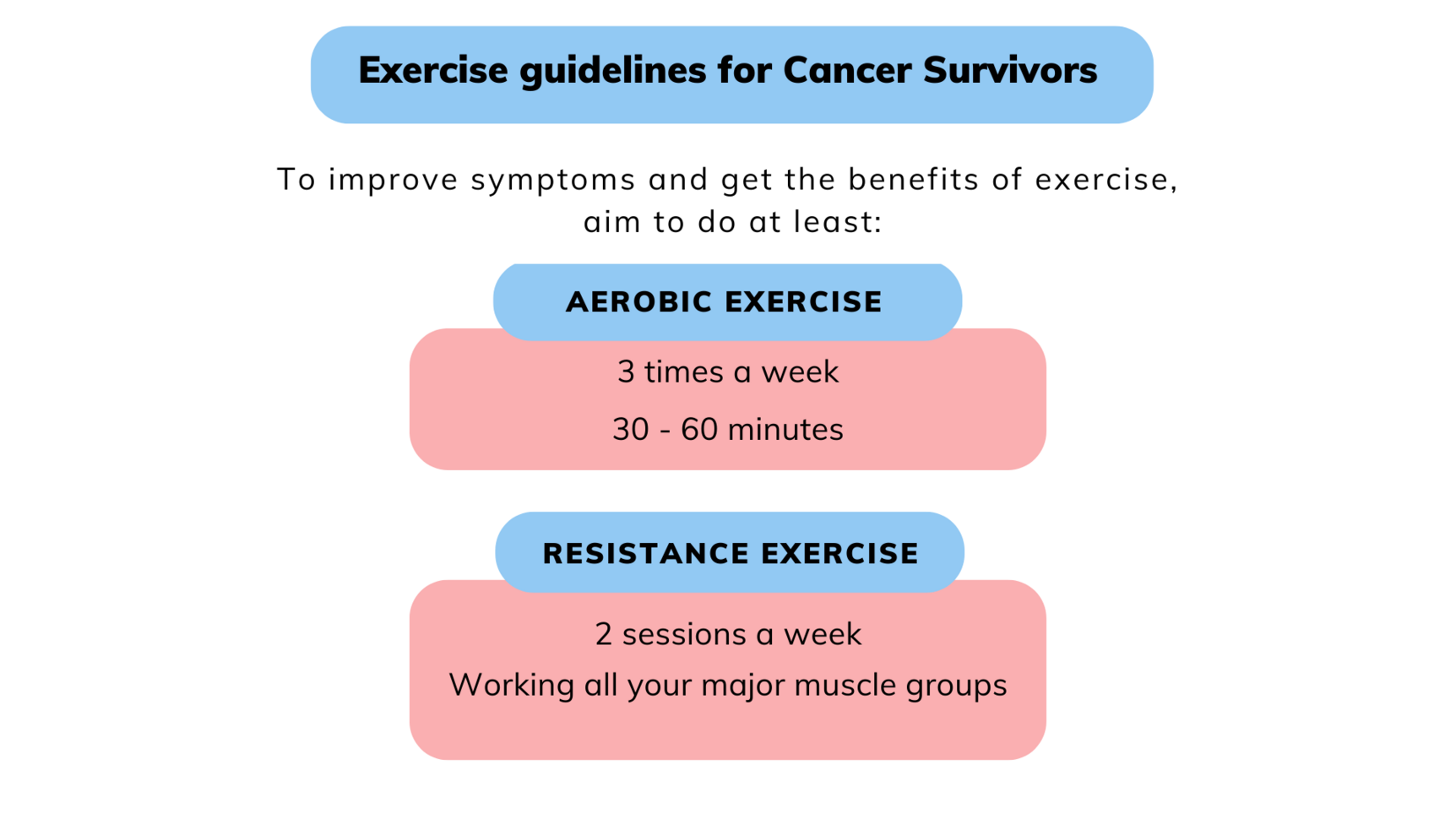As described by Clinical Specialist Physiotherapist Grainne Sheill in the above video, the following are the international guidelines on exercise for people living with and after cancer:
Exercise Guidelines for Cancer Survivors

Returning to exercise
To begin with, you may find it difficult to reach the recommended levels of exercise.
If you have been inactive for a long time, start with shorter sessions (10 to 15 minutes). Try to build up your activity over time by adding on a few minutes each week.
Another important goal is to try to avoid long periods of inactivity – gentle movement breaks throughout the day will be good for your body and mind.
Rest
Getting enough rest is an important part of recovery and rehabilitation.
You should rest after each session as needed.
Precautions with physical activity
If you are new to exercise or returning to activity after treatment, speak with your doctor to make sure they are happy for you to start a new exercise plan.
During and after treatment, you can ask your doctor the following questions:
- Are they happy you start a new exercise plan? Do you need any tests or checks done first?
- If you are receiving treatment or taking medication, is there anything you should know about exercising while on this treatment/medication?
- If you have a port line, a PICC line or a chemo pump, what do you need to know about exercising with this in place?
Do not exercise if you have a fever, a risk of bleeding, anemia, abnormal blood counts, extreme fatigue, or extreme pain.
If you are having radiation therapy, sweat may irritate your skin due to skin breakdown. Choose workout clothes that will pull away moisture. Try to keep your skin dry to avoid irritation.
Exercise intensity
What are the different levels of exercise intensity?
- Light Intensity activity – requires minimal effort to perform. A good rule of thumb is that your breathing should be regular enough that you should be able to sing when performing light intensity activities. Examples: gentle walking, light housework, shopping or yoga.

- Moderate Intensity activity – requires slightly more effort and you will feel you are breathing more heavily and your heart is beating faster. During moderate activities you should be able to talk, but not sing. Examples: brisk walking, water aerobics and dancing.

- Vigorous Intensity activity – requires a lot more effort and you will be breathing heavily and your heart will beat much faster. During vigorous activity you should not be able to hold a conversation and you should only be able to sustain a few words. Examples: jogging, swimming, skipping, and hiking uphill.


